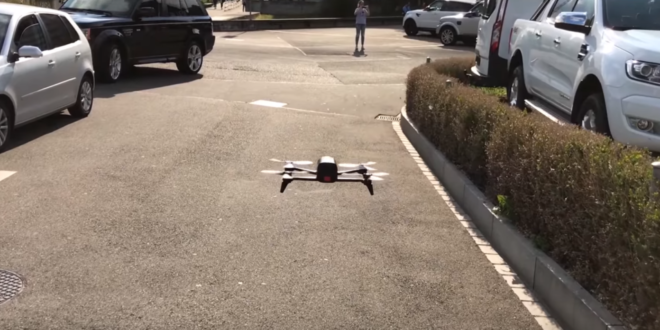Street-level drone operations in city facilities are removed from changing into a actuality. There are loads of the reason why that’s. As autonomous automotive producers are discovering, issues can go fallacious on the highway and sure conditions can’t be predicted or accounted for. If the autonomous automobile is airborne, that provides one other degree of complexity to what’s already a dynamic situation. Quite rightly, security comes first.
And but loads of individuals stay satisfied that in a couple of quick years we’ll be sharing the streets – not simply the skies – with autonomous drones. One crew constructing know-how to make that a actuality is made up of researchers from the University of Zurich and the Universidad Politecnica de Madrid.
In a paper printed earlier this week, the researchers confirmed that it’s potential to prepare drones to adapt to the foundations of the highway. This is DroNet, quick for Drone Network.
Teaching drones how to behave
The crew has harnessed machine studying to develop DroNet, a convolutional neural community “that can safely drive a drone through the streets of a city.” So how does it work?
Essentially, DroNet is a coaching algorithm. Using the drone’s onboard digital camera it produces two outputs. The first is a choice on a protected steering angle to make sure that the drone avoids any obstacles. Second is a collision chance, which teaches the UAV to acknowledge harmful conditions unfolding and react to them.
“We have developed an algorithm that can safely drive a drone through the streets of a city and react promptly to unforeseen obstacles, such as other vehicles and pedestrians,” mentioned Davide Scaramuzza, head of the University of Zurich’s Robotics and Perception Group.
The query now could be how to collect sufficient knowledge to proceed the event of the algorithm. In an excellent world, an expert pilot would fly totally different routes to construct up a database of coaching trajectories. But given the quantity of knowledge required and the chance it might pose to individuals and highway customers, that’s probably not an possibility. Instead the crew has began to prepare a UAV utilizing knowledge collected by vehicles and bicycles.
As these are already a standard incidence on our roads, they supply mountains of real looking knowledge. The algorithm can observe and study from this knowledge to construct a wider understanding of static and shifting obstacles.
So far the system has been ready to drive drones autonomously whereas following realized guidelines of the highway, similar to staying in your lane, avoiding pedestrians and different staple items we take as a right.
Want to discover out extra? You can learn the analysis paper right here.
 Unmanned Aerial Vehicle The latest drone news
Unmanned Aerial Vehicle The latest drone news




